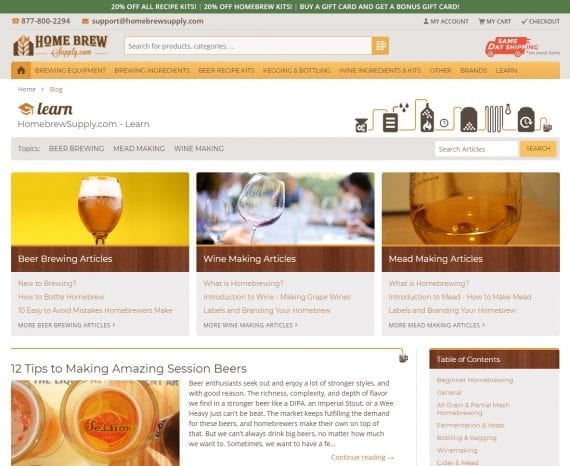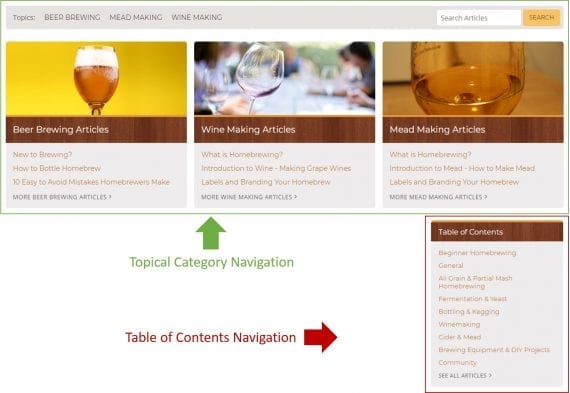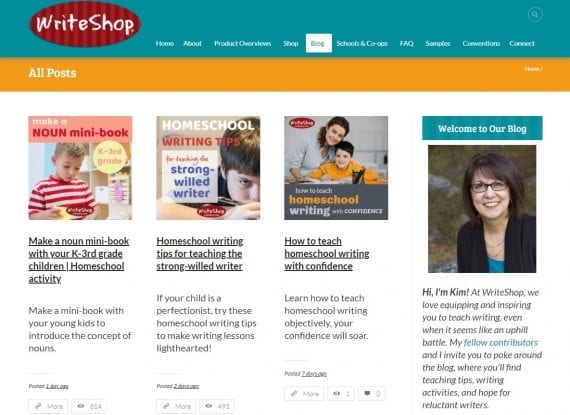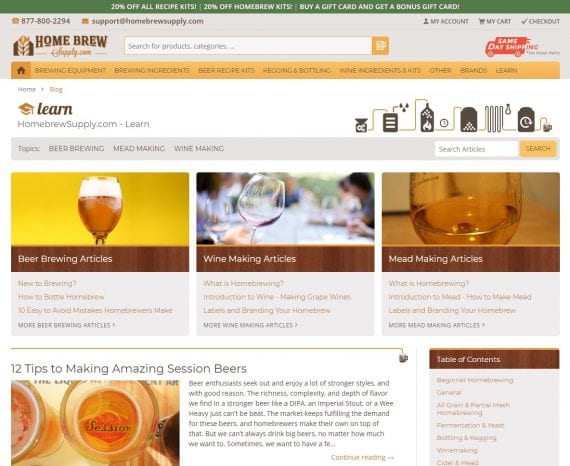Quality blog content can drive organic search traffic. Ecommerce marketers who reject blogging — or give up after a couple of months — miss out.
Plenty of ecommerce companies maintain long-term, quality blogs. The best posts convey passion for the company’s products and offer genuinely helpful tips related to their use. Beyond search engine optimization, the blogs are often a labor of love.
The navigational structure of a blog is as important as the content. A blog from a smaller company may lack design polish, but its internal linking could be superior in terms of optimizing for organic search.
In this post, I’ll critique three ecommerce blogs for their SEO benefits. I have no connection to the blogs. I found them via random searches on Google.
Home Brew Supply

Home Brew Supply’s blog, “Learn,” contains instruction content.
Home Brew Supply’s blog, “Learn,” is a repository of resource articles. A blog that delivers organic search value recognizes that consumers look for broad educational topics, such as “how to make beer” and “how to bottle homemade wine,” as well as product-based topics such as “beer making kit reviews.”
Home Brew Supply hits all of these topics, and organizes them handily in three categories: “Beer Brewing,” “Wine Making,” and “Mead Making.” Those categories are ready-made for SEO because they describe the company’s products and are also frequently-searched phrases.
Home Brew Supply’s category pages would be better if they contained a description at the top. A sentence or two would do the trick without pushing the content too far down the page.
It’s typically easier to optimize blog category pages than similar ecommerce product pages because the informative text feels more natural. Blog pages can reach a broader audience in organic search by ranking for search queries with informational intent, which product pages rarely do.
Every page on Home Brew Supply’s blog contains links to the three categories, helping readers and search bots and sending a bit of link authority to the three category pages.
To improve SEO, Home Brew Supply could make the “Learn” link in the sitewide header a rollover, linking to the three blog categories. That way, every page on the site would contribute internal link authority to those category pages, providing a stronger chance to rank.
Unfortunately, another navigation element on the blog — the table of contents at the top right sidebar — is confusing. It’s essentially a sitemap of more than 100 articles, but it’s too overwhelming to deliver any benefit to readers. Its location appears at first glance to be categories. A better treatment would be merging the three categories and the table of contents into categories and subcategories.

The “Table of Contents” on the right competes with the blog’s categories.
The posts on Home Brew Supply’s blog contain links to products using natural phrasing, which is good. One post, however, contained nine product links, which is usually too many. But this post linked in such a naturally helpful way that it doesn’t raise alarms, at least in my estimation. Consider, for example, this sentence:
The smooth, rich mouthfeel of some beers is boosted by the use of malts and grains like wheat, oats, and rye.
The words “wheat,” “oats,” and “rye” each link naturally to a product page.
Link helpfully and discreetly, which Home Brew Supply does, and search engines and readers alike will reward you.
WriteShop

WriteShop’s blog includes only product info. But it’s helpful, nonetheless.
WriteShop sells instructional materials for homeschooling. WriteShop’s blog contains nothing but product-based posts. Typically this approach is heavy-handed. But not for WriteShop. Its blog instructs teachers and homeschoolers on how to use its products to solve real-life issues.
For example, WriteShop’s audience might search for “how to teach the five-paragraph essay.” The blog delivers a solution to the searcher’s need, beyond just pushing a product. At 1,100 words, the resulting post is naturally relevant to the consumer and is therefore likely to rank and convert.
Had the author written solely about the products — WriteShop I and WriteShop II — the post may not have contained words or phrases that searchers typically use.
WriteShop’s blog helpfully links to other sites, such as educational resources and blogs, without applying a nofollow. When you’re linking to valuable sites, there’s no need to nofollow, especially given Google’s recent change to its nofollow treatment. Google views open links as more natural link behavior.
This blog is prolific — multiple weekly posts from several authors. However, bots cannot easily access all of them. The rollover “Blog” link in the sitewide header includes just seven of the 29 categories. And the “Topics & Categories” navigation in the right sidebar of the blog page is not crawlable. Thus the other 22 categories have no reliable entry point.
Compounding the crawl issue is a “View More” button at the bottom of the main blog page and each category page. When clicked, the button loads more posts on the same page. But the loading is triggered by AJAX and not a traditional link. Thus it’s not crawlable to all search bots. In effect, older posts become orphaned from bots after being pushed off the first page by newer ones.
Lastly, the main blog page and category pages are painfully slow to load. The visual navigational framework loads in about three seconds, but there’s a big, white blank in the middle where images and links to posts will load — in about five more seconds. The post pages load quickly, as do the ecommerce sections of the site. But slow navigational pages are roadblocks for readers and bots.
Outdoor Gear Exchange

Outdoor Gear Exchange’s blog offers mainly news and product-use articles.
The mission of Outdoor Gear Exchange is “to sell great gear at great prices.” It wins my “Most Passionate Blog” award. The blog has many authors. Eight of the 10 posts on the blog’s home page by different people with real names, not just “Staff.” Including the names reminds shoppers that they’re reading from like-minded, passionate users. All that the author pages lack is a short bio and a photo to complete the personalization.
Every post links to the author’s page, which in turn links to a list of the author’s posts. That linking is vital for SEO as it spreads authority deeper into the blog.
Photos on the blog posts are alternately gorgeous or gritty, depending, presumably, on the photographer. Regardless, the real-life context of many of the authors’ photos improves the blog’s credibility.
Photos, indirectly, benefit SEO. They improve engagement, which Google measures for its rankings. Photos also encourage readers to link or share.
The structure of Outdoor Gear Exchange’s blog works well for SEO. There are five categories — “Gear Head,” “News and Events,” “Other,” “Trip Reports,” and “Video” — that link to posts. However, the seven subcategories add no SEO value. What’s the difference between “Most Valuable Gear” and “Premier Gear”? I doubt that consumers search for those phrases.
The blog category names could be better. Posts could be broken out by common search phrases, such as the sport or the purpose, similar to the categories for the how-to section (“Knowledge Categories”) and, also, the products for sale. The resulting title tags, headings, and anchor text would be more relevant to what shoppers search for.
